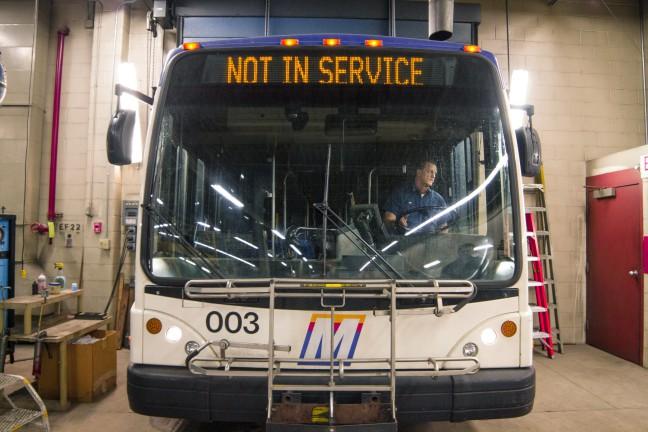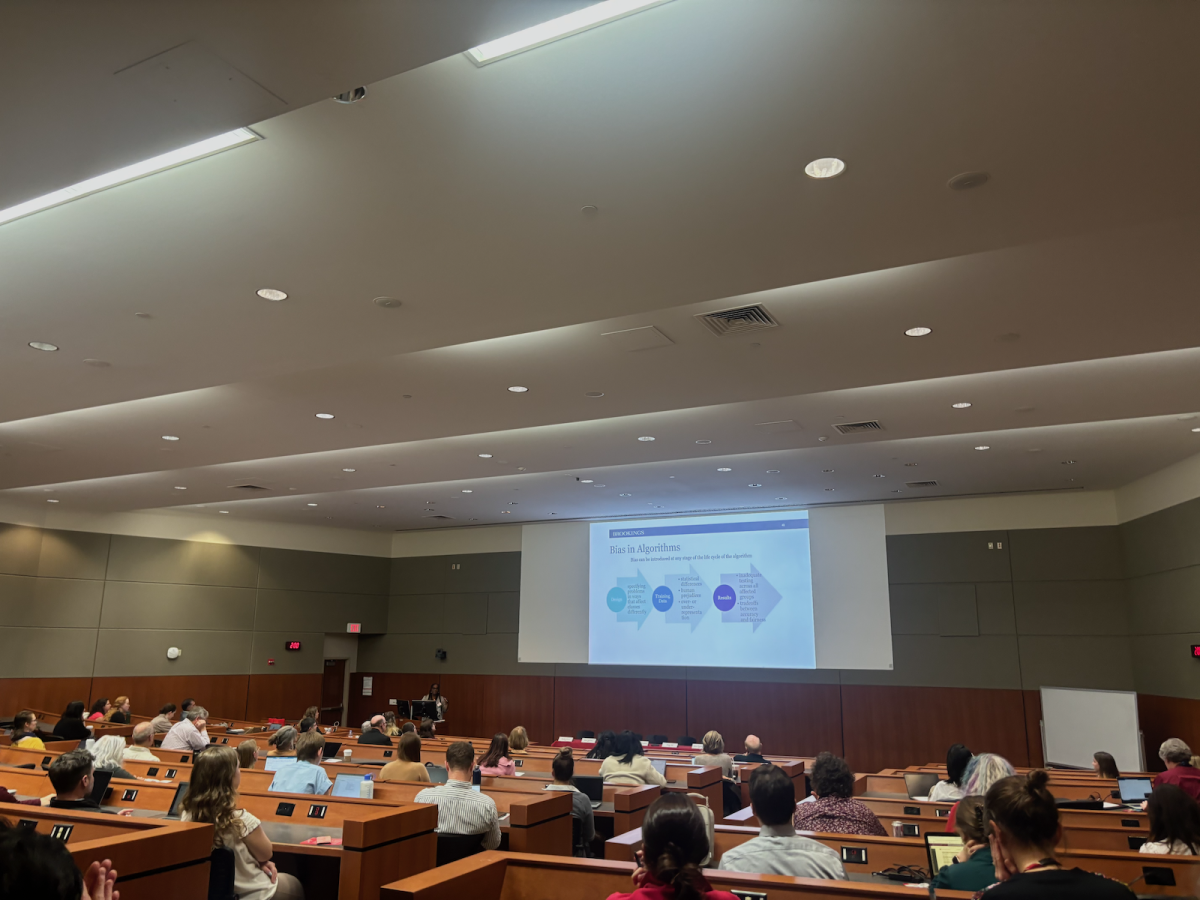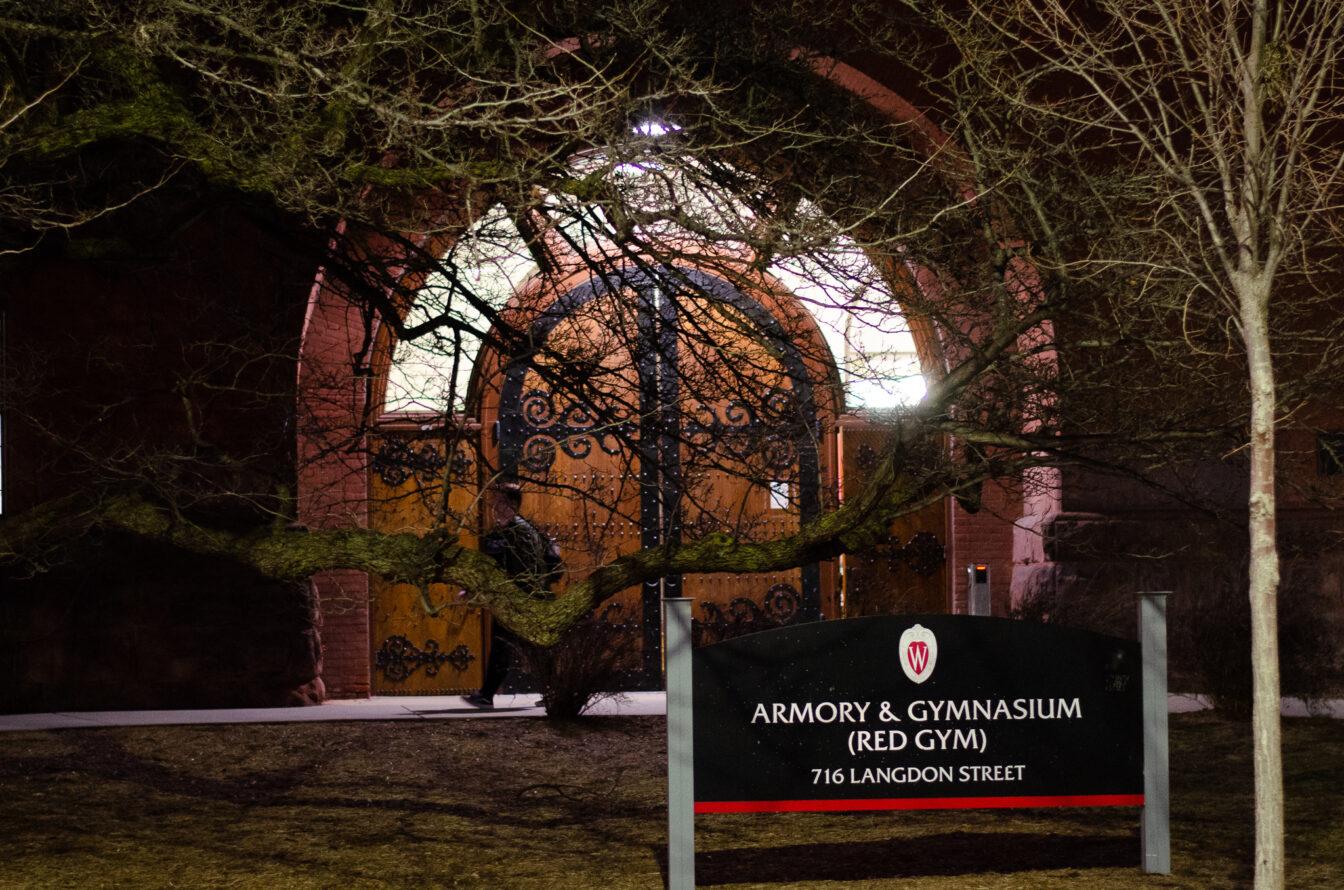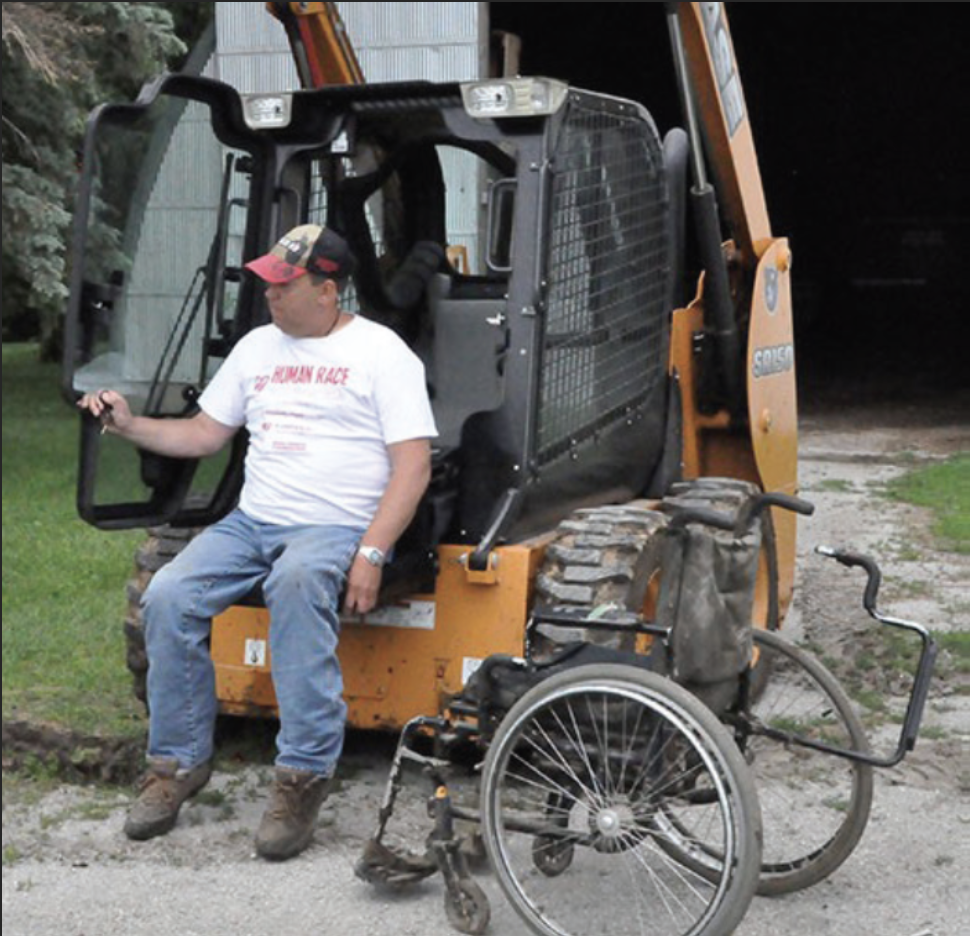Madison Metro’s 1970s garage houses 54 more buses than it’s supposed to — and it’s part of what’s causing the city’s overcrowded bus routes.
With ridership reaching a record 15.2 million rides in 2014, including routes in Verona, Fitchburg and Middleton, finding a new place for the city’s buses is among the solutions to meeting rising demand.
The city hopes to update that 1970s bus garage and eventually move toward a more efficient Bus Rapid Transit System, a new supplemental program with limited stops to streamline commuter traffic.
The city’s bus garage was meant to house 160 buses, Madison Metro Transit spokesperson Mick Rusch said.
Today, the building, located on 1101 East Washington Avenue, is home to 214 buses, Rusch said. That number does not include the 17 paratransit vans and the additional service vehicles and pick-up trucks that are also held at the garage.
“We have all this crammed into one facility,” Rusch said.

The overcrowded garage results in a conundrum for Metro Transit. Madison Metro’s growth — it reached 15.2 million rides in 2014 — is causing popular routes, such as route 2, to become more crowded.
But due to the lack of space for new buses, Metro Transit is unable to increase its service.
Buses, especially during peak hours, are especially crowded, forcing many people to stand for extended periods of their ride. During peak commuting hours for students and workers, Rusch said Metro Transit buses run 30 to 40 percent over capacity.
Rusch said riders often say the bus is either too crowded to ride or that the bus passed them because it was too full. Riders ask why Metro Transit doesn’t just put an extra bus on the route, but Rusch said during peak hours, they are out of extra buses.
Jeff Butler, maintenance manager for Madison Metro Transit, said the spare ratio — the percentage of extra buses not used during peak hours — should generally be at 20 percent. That means Metro Transit should have around 43 extra buses during peak hours. Butler said most of the time, they have only three extra buses.
“Here is the problem with that: You’re right here at the cliff,” Butler said, gesturing his hand at the edge of the table. “It is just a matter of when you are going over. That is the point we are at right now. “
A solution to overcrowding
The City of Madison owns the former Cub Foods on Nakoosa Trail, next to the East Side Wal-Mart. Metro Transit is interested in using this facility for a satellite bus garage, Rusch said. This proposed garage would hold an additional 70 buses, which would help address the overcrowding in the East Washington location, he said.
Along with the overcrowded garage, Butler said the satellite garage would alleviate many of the maintenance problems. He said most public transit lots have a staging area that can fit 25 to 30 buses.
Metro Transit’s lot only has the capacity for four. Butler said with another garage, they would be able to respond faster to mechanical issues for buses on the road.
“We got to serve the people,” Butler said. “We have so many more routes, and we are carrying so many more people, we have to get there faster and get them a bus faster so people can get moving. People got to be at jobs, they got to be at appointments.”

But the bus garage did not get passed in the city budget last year. Rusch said a regional transit authority, which would get funding through sales tax, would help Metro Transit grow more quickly and would be dedicated only to running the transit service, but state lawmakers have eliminated RTAs.
Rusch said the city could also use the facility to implement a bus rapid transit system in Madison, which the city has studied but would come with additional costs. A BRT is a high frequency, limited stop transit system. This potential satellite garage would hold 35 BRT buses. They operate similarly to a train and have travel times reduced around 40 percent, he said.
When the BRT bus would approach a traffic light, the light would turn green. This would limit the amount of time the bus spends at a stop and would offer frequent and direct service through the downtown area, Rusch said.
“This is a big picture solution to our overcrowding on campus,” Rusch said.
Rusch said the city was looking into leasing a property to store some extra buses as a stop-gap solution. He said he expected a space to hold around 15 buses.
Madison Metro has only been able to add five extra buses over the past couple of years due to the overcrowding, Rusch said. To make room for these extra buses, Madison Metro auctioned off some of their “historical buses” from the 1930’s and 1940’s.
One of the buses went to a vehicle collector in Hollywood so he could feature them in films. Only one of these historical buses remains in the bus garage.

Catering to Madison millennials
In Madison’s campus and downtown area, Metro Transit caters to a large millennial population, who are often more interested in using public transit than owning a car, Rusch said.
Epic Systems, a healthcare software company in Verona, employs many of those young professionals. A few years ago, Verona contracted Madison Metro to create a bus line from downtown Madison to Epic’s headquarters.
Rachael McCormick, programmer team lead for Epic Systems, recently lived in an apartment on Capitol Square. For her commute, she rode the bus line from downtown to Verona every work day.
McCormick said instead of getting on the bus at the closest stop to her apartment, she walked an extra four blocks to the first stop on the route to ensure she would get a seat.
“If you tried to get on a stop later in the route, you probably would be standing for the whole 45-minute ride,” McCormick said.
Despite adding extra buses, this line remains one of Metro’s most popular. Rusch said Epic has approached Metro Transit and asked to add bus lines, but with the undersized bus garage, they are currently unable to provide more service.
On campus, route 80 is notorious among riders for being extremely overcrowded. Rusch said UW pays for the 80 routes, which include the 81, 82 and 84, with UW giving them a select budget each year and working with officials to provide as much service as possible with that amount.
Ben Vondra, policy program analyst with UW Transportation Services, said with more than 40,000 students on campus, adding enough buses to meet the demand is difficult. He said many students need to move across campus in a very short period of time, but the bus system is unable to support that.
“We could not purchase enough to move every single person on campus in that amount of time, even if we were to add buses,” Vondra said.
The BRT system would help this issue downtown, Rusch said, increasing capacity and reducing travel time, which could benefit students who are rushing to class.
Rusch said he believes Metro Transit would be able to grow even further with an additional garage. With the potential for a BRT system and increased service, he said he looks forward to seeing where Metro Transit would be in the future.
“It is hard for us to pinpoint every reason that ridership went up, but it’s just something that keeps going in Madison,” Rusch said “It’s just very exciting to be a part of it.”





















